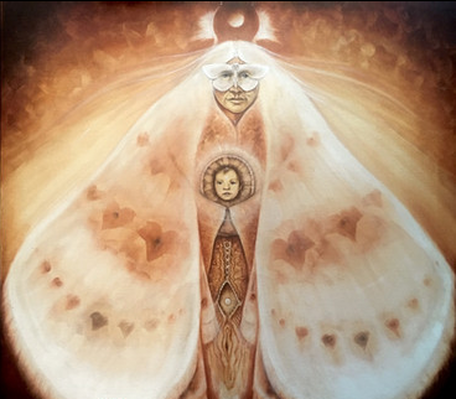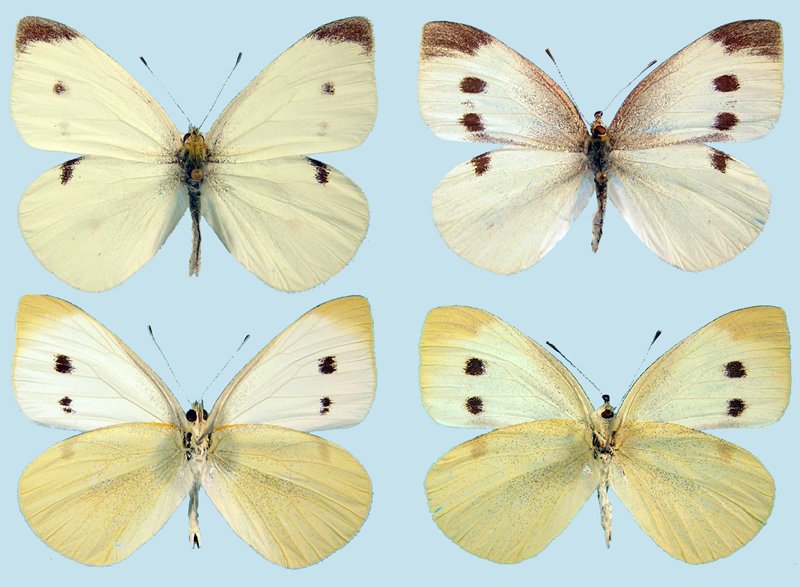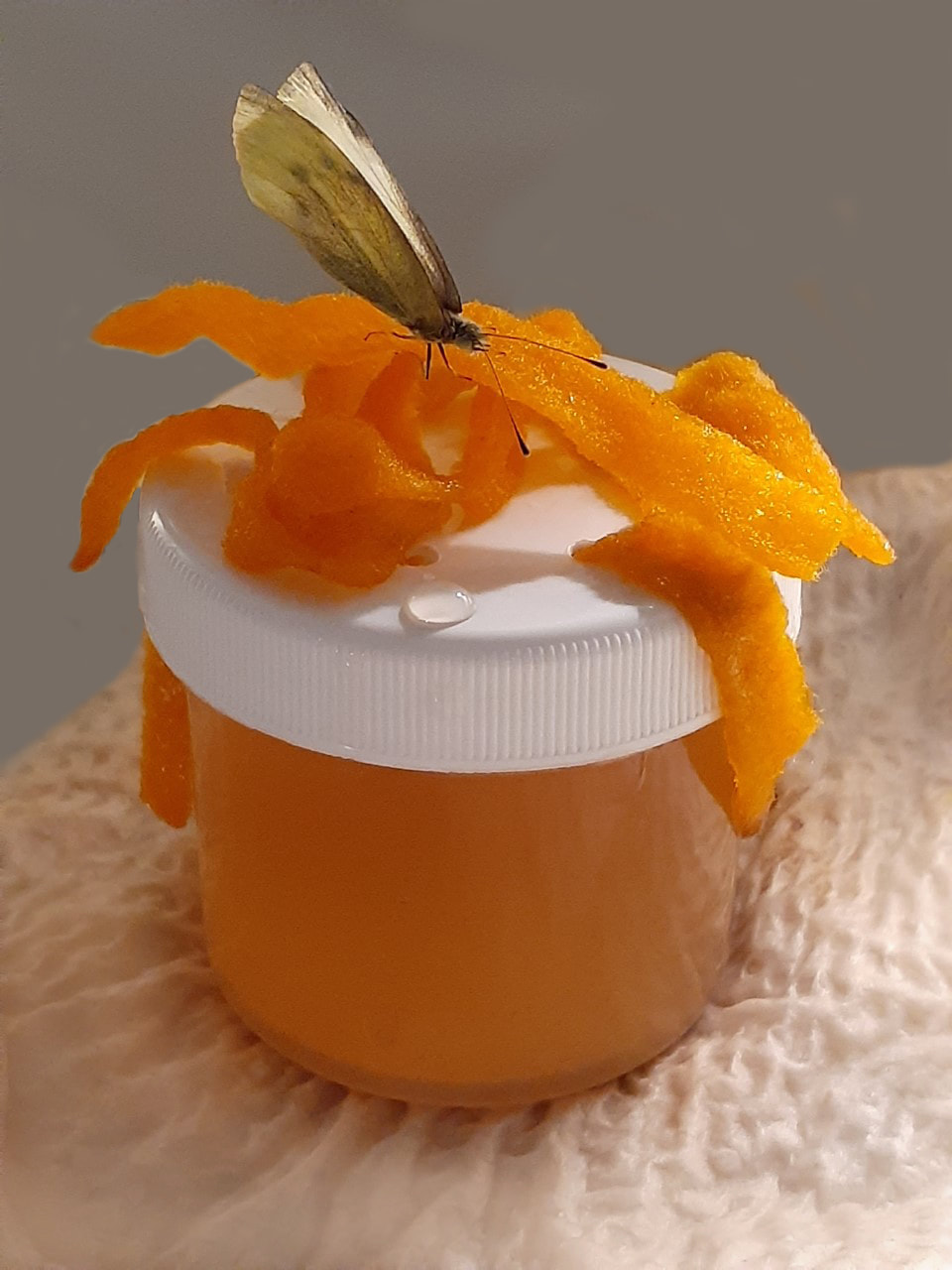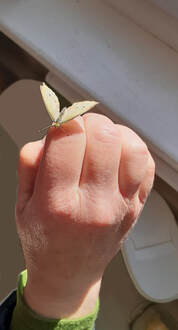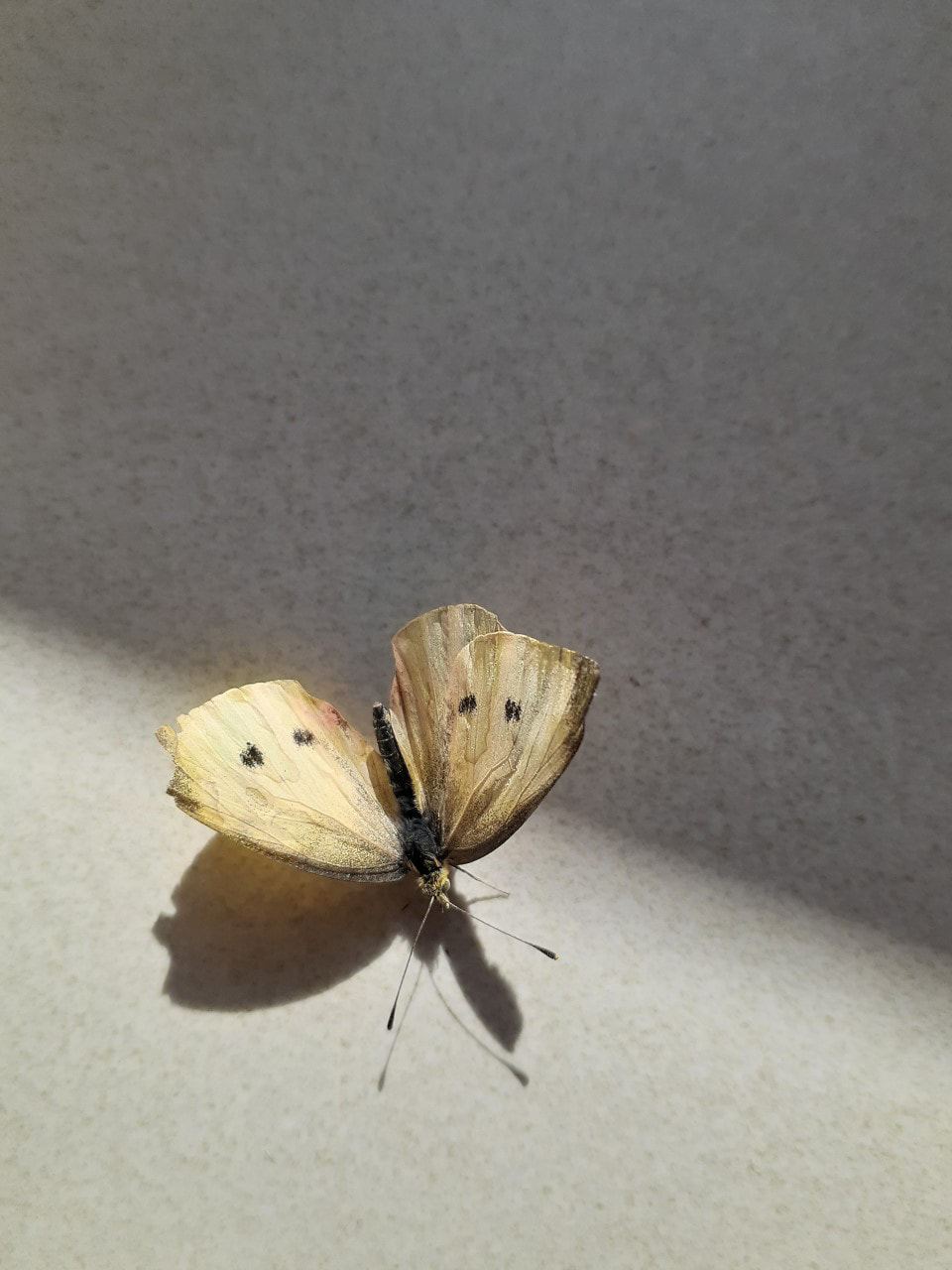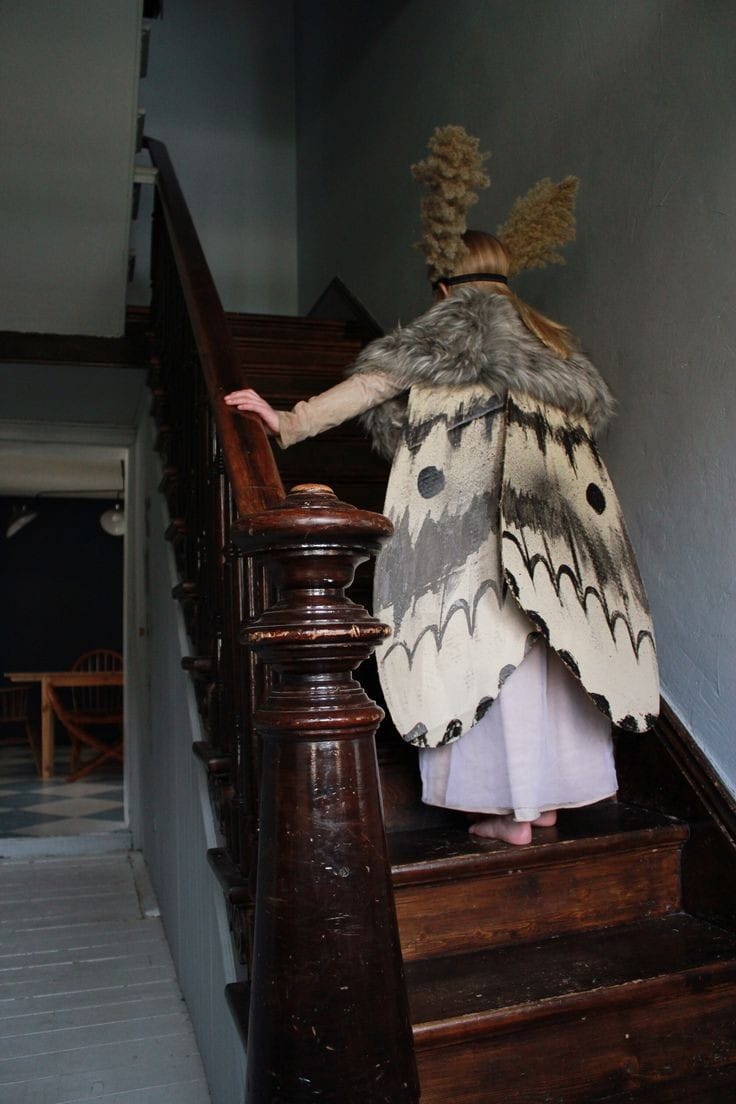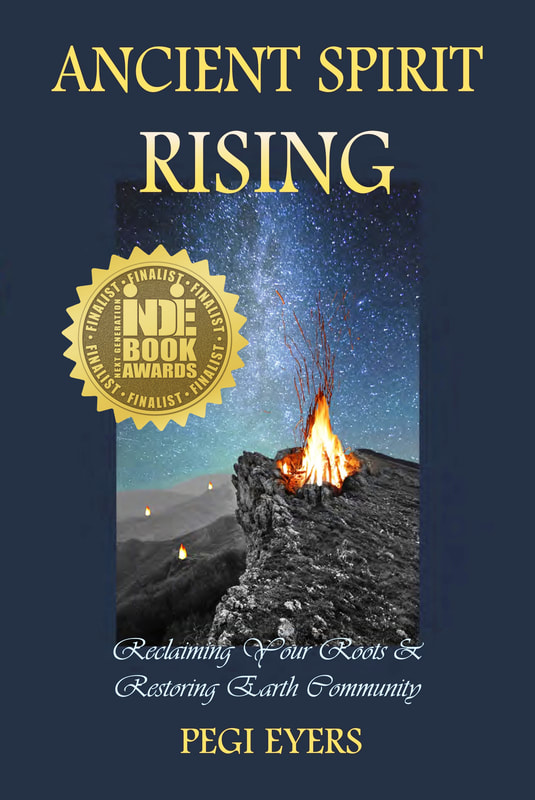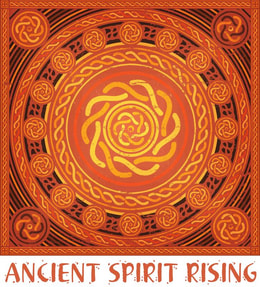PEGI EYERS
Pandemic restrictions aside, I have grown weary of late with "wilderness adventure" and "nature experience" narratives that involve counting the miles, scaling the heights, penetrating the off-limits, traversing the most rugged terrain, finding rare species after a day-long search, or paddling like mad to reach that overnight camping destination. Nature excursions have been commodified for decades now - a mega-industry tiered to income - and today privileged folks spend lavish amounts of money to go "rock climbing," "mountaineering," "canyoneering," "whitewater rafting," "fly-fishing" or "wildlife viewing." And for any "helicopter expedition, personalized tour, whale-watch or safari" there is always a luxury lodge waiting at the end of the day.
And yet nature is not a "challenge," a set of hurdles to overcome, a place to "survive" or improve your personal score. These are all outdated concepts held over from the Euro-Colonial era, that pit "man against nature" through high-powered conquest. Based on fear and loathing, there is no genuine respect or love for nature, in the worldview that western men carry in their colonial souls.
"How far and how fast can my ATV go? How can my pickup truck compete with this run-off, this muddy backroad? Where is the most spectacular scenery for my rappelling, surfing, zipline, hang-gliding, bungee-jumping or sea-kayaking? How deep in the forest can I go, to reach that palatial, fully-stocked hunting camp?" Modernity has produced people so callous, and so focused on centering themselves in every location, that they have lost the actual ability to see, or feel that nature is alive and sacred.
These "extreme" activities are also deeply racist, classist, ableist and misogynist, by leaving out the wishes and desires of BIPOC, low income, disabled folks, or women. Not everyone is physically, mentally or financially equipped, or even interested in, superficial encounters with the wild!
In counterpoint to the über-man who takes up space with his "power over nature," I'm seeking narratives of nature connection that are scaled to the human body, to our wonder at the "small" and our most intimate expressions, and to seeing the tiniest organism with a soft touch and a gentle heart. This is the worldview of simplicity and immediacy, that favors the delights in our own orbit to the lofty heights of "eco-adventure." Even in a few feet of water, sunshine, or soil there is so much going on! I have a friend who takes the most astonishing pleasure in her tiny backyard garden. In my own case, the story of my Cabbage Butterfly Friend is a great illustration of "embracing the small."
And yet nature is not a "challenge," a set of hurdles to overcome, a place to "survive" or improve your personal score. These are all outdated concepts held over from the Euro-Colonial era, that pit "man against nature" through high-powered conquest. Based on fear and loathing, there is no genuine respect or love for nature, in the worldview that western men carry in their colonial souls.
"How far and how fast can my ATV go? How can my pickup truck compete with this run-off, this muddy backroad? Where is the most spectacular scenery for my rappelling, surfing, zipline, hang-gliding, bungee-jumping or sea-kayaking? How deep in the forest can I go, to reach that palatial, fully-stocked hunting camp?" Modernity has produced people so callous, and so focused on centering themselves in every location, that they have lost the actual ability to see, or feel that nature is alive and sacred.
These "extreme" activities are also deeply racist, classist, ableist and misogynist, by leaving out the wishes and desires of BIPOC, low income, disabled folks, or women. Not everyone is physically, mentally or financially equipped, or even interested in, superficial encounters with the wild!
In counterpoint to the über-man who takes up space with his "power over nature," I'm seeking narratives of nature connection that are scaled to the human body, to our wonder at the "small" and our most intimate expressions, and to seeing the tiniest organism with a soft touch and a gentle heart. This is the worldview of simplicity and immediacy, that favors the delights in our own orbit to the lofty heights of "eco-adventure." Even in a few feet of water, sunshine, or soil there is so much going on! I have a friend who takes the most astonishing pleasure in her tiny backyard garden. In my own case, the story of my Cabbage Butterfly Friend is a great illustration of "embracing the small."
Cabbage Butterfly (Pieris Rapae)
One afternoon in early March 2021, I noticed a Cabbage Butterfly with beautiful markings, lying sideways on the dining room floor. This was not surprising, as a cadre of eight had already emerged in January from the potted kale moved indoors last autumn. Being hatched in the warmth of the house out-of-season, there was nothing in the immediate environment to sustain this wee being, and her chances of living past "day one" were slim. Nevertheless I lifted her frail body up with my “insect catcher” (small plastic sheet and glass lid). Placing her upright on the counter, I watched her struggle to regain her footing, and quickly set up a “feeding station” with the felt stamens, punctured container and sugar-water on hand from the last off-season emergence. She seemed content to stay on the stamens, so I left her without a cover or netting.
So many “lucky incidents” followed to extend the life of this tiny being, that I feel compelled to bear witness and tell her story. The first challenge (aside from being prone on the floor) was that when I set up her sugar-water station, the stamens overflowed the saucer area. I checked on her 30 minutes later, and was dismayed to see that she had landed in a pool of nectar, and was immersed on her side struggling for life. With a small wooden skewer under her footies, I lifted her up and placed her on a dry layer of paper towels. Hoping the sticky nectar wouldn’t permanently damage her wings, I spritzed her with water, and much to my relief she dried off and revived over the next couple of hours.
Then it was on to some serious feeding. What a delight to watch her delicate proboscis twirling in a spiral, finding a juicy patch and settling in. She soon became my special friend, who I nurtured and cared for, like any beloved pet. When the sugar-water got low or the stamens began to dry, I changed the feeding station, and redirected her to it if she flew off-course. After hours of feeding I would find her perched on other objects in the kitchen – plastic cat food containers, a glass bottle, or other items. But she never flew too far – until I began to find her perched upright on the kitchen floor.
There were exactly five incidents when I arrived home and clumped into the kitchen, only to miss stepping on her in my “assumption of human space.” Each time I lifted her with the flat plastic and returned her to her place on the saucer or the stamens, and each time she was safe. The next dangerous incident occurred one day when I lifted the cat food tupperware in a rush, filled the kitty bowls and clicked it back on the counter, only then looking for my little butterfly friend. I immediately realized I had seen her perched on that exact container only an hour before, but I had forgotten all about it. In a state of upset and fear I began to search the kitchen and dining area, thinking she was smashed to bits, crushed under my own foot, or thrust into some crevice, never to return.
Imagine my relief and surprise when I saw her perched upright, hidden by leaves under the plant stand on the kitchen island. I gently lifted her up again with the plastic sheet, and she seemed to be in fine shape. What a resilient little being! So the days passed, far beyond the 3-week life cycle of a Cabbage Butterfly. She was in a warm, sunlit space, next to the conversation and commotion in the kitchen, and didn’t seem to mind one bit. In the evening I turned on a small tube light to give her a few hours of extra light, and then she settled into the darkness like the rest of the household, to be greeted in the morning with activity and a warm breeze. In the middle of the day, or at other times, I would gently spray the top of the feeding station and the stamens with a mist of water, to keep her environment from drying out.
So many “lucky incidents” followed to extend the life of this tiny being, that I feel compelled to bear witness and tell her story. The first challenge (aside from being prone on the floor) was that when I set up her sugar-water station, the stamens overflowed the saucer area. I checked on her 30 minutes later, and was dismayed to see that she had landed in a pool of nectar, and was immersed on her side struggling for life. With a small wooden skewer under her footies, I lifted her up and placed her on a dry layer of paper towels. Hoping the sticky nectar wouldn’t permanently damage her wings, I spritzed her with water, and much to my relief she dried off and revived over the next couple of hours.
Then it was on to some serious feeding. What a delight to watch her delicate proboscis twirling in a spiral, finding a juicy patch and settling in. She soon became my special friend, who I nurtured and cared for, like any beloved pet. When the sugar-water got low or the stamens began to dry, I changed the feeding station, and redirected her to it if she flew off-course. After hours of feeding I would find her perched on other objects in the kitchen – plastic cat food containers, a glass bottle, or other items. But she never flew too far – until I began to find her perched upright on the kitchen floor.
There were exactly five incidents when I arrived home and clumped into the kitchen, only to miss stepping on her in my “assumption of human space.” Each time I lifted her with the flat plastic and returned her to her place on the saucer or the stamens, and each time she was safe. The next dangerous incident occurred one day when I lifted the cat food tupperware in a rush, filled the kitty bowls and clicked it back on the counter, only then looking for my little butterfly friend. I immediately realized I had seen her perched on that exact container only an hour before, but I had forgotten all about it. In a state of upset and fear I began to search the kitchen and dining area, thinking she was smashed to bits, crushed under my own foot, or thrust into some crevice, never to return.
Imagine my relief and surprise when I saw her perched upright, hidden by leaves under the plant stand on the kitchen island. I gently lifted her up again with the plastic sheet, and she seemed to be in fine shape. What a resilient little being! So the days passed, far beyond the 3-week life cycle of a Cabbage Butterfly. She was in a warm, sunlit space, next to the conversation and commotion in the kitchen, and didn’t seem to mind one bit. In the evening I turned on a small tube light to give her a few hours of extra light, and then she settled into the darkness like the rest of the household, to be greeted in the morning with activity and a warm breeze. In the middle of the day, or at other times, I would gently spray the top of the feeding station and the stamens with a mist of water, to keep her environment from drying out.
On my birthday in March I returned home from a lovely celebration lunch, and a few hours later dipped into the take-out cake (of course), accidentally knocking the top of the container onto the feeding station. Oh my god! I looked for my butterfly friend, and there she was, fastened to the styrofoam lid, none the worse for wear. I’m not sure how she jumped so nimbly onto the lid without getting hurt, but I was so glad and relieved.
As the days passed, I checked on her often, blowing on her wings to create a warm breeze and imitate the elements she might have encountered in the wild. I talked to her, put her back on the stamens if she wandered too far, and just generally studied this delicate and wondrous being. She started to turn her wee body to face me, with her little eyes looking up into my own. I felt in my bones a connection between us, and that she was telling me she was unhappy but grateful for this small chance at life, that she trusted me implicitly, and that she was fulfilling her own destiny as a member of Earth Community.
I also communed with the Cabbage Butterfly Deva, or archetypal spirit, and with metapoetics and prayer, interacted with the sacred network and important niche of this species. I wondered about my butterfly friend’s impression of this strange environment, for like any other being, she held epigenetic memories of her normal passage through life. It also crossed my mind that some aspect of the Cabbage Butterfly psyche may now hold a new adaptation in their memory from care in captivity, and how would that affect them? Such things remain a mystery.
At one point I thought my friend was ailing as she sat still for so long, so I gently separated out her wings with the point of my wooden skewer as she let me caress her. Her wings were so much more sturdy than they appeared!. As her wings separated they began to dry, and over the next couple of days she was energized and fluttering around the kitchen, again with my help returning to her station. A few times I touched her wee antenna and she stepped up onto my finger, sitting there with an expression of contentment, basking in my admiration and love. She never seemed to lag, and at the end of the 4th week I began to call her my “Miracle Butterfly” after all the NDE's she had survived.
As the days passed, I checked on her often, blowing on her wings to create a warm breeze and imitate the elements she might have encountered in the wild. I talked to her, put her back on the stamens if she wandered too far, and just generally studied this delicate and wondrous being. She started to turn her wee body to face me, with her little eyes looking up into my own. I felt in my bones a connection between us, and that she was telling me she was unhappy but grateful for this small chance at life, that she trusted me implicitly, and that she was fulfilling her own destiny as a member of Earth Community.
I also communed with the Cabbage Butterfly Deva, or archetypal spirit, and with metapoetics and prayer, interacted with the sacred network and important niche of this species. I wondered about my butterfly friend’s impression of this strange environment, for like any other being, she held epigenetic memories of her normal passage through life. It also crossed my mind that some aspect of the Cabbage Butterfly psyche may now hold a new adaptation in their memory from care in captivity, and how would that affect them? Such things remain a mystery.
At one point I thought my friend was ailing as she sat still for so long, so I gently separated out her wings with the point of my wooden skewer as she let me caress her. Her wings were so much more sturdy than they appeared!. As her wings separated they began to dry, and over the next couple of days she was energized and fluttering around the kitchen, again with my help returning to her station. A few times I touched her wee antenna and she stepped up onto my finger, sitting there with an expression of contentment, basking in my admiration and love. She never seemed to lag, and at the end of the 4th week I began to call her my “Miracle Butterfly” after all the NDE's she had survived.
Toward the end of the 5th week I came home one day, and my Butterfly Friend was nowhere to be found. I searched the kitchen counter, front and back, the entire area and the dining room for 30 minutes. It finally occurred to me to look under the layers of paper towel holding the sugar-water, and at that moment a giant Wolf Spider zipped out, and ran away. As I lifted the paper towel higher, there she was, right where the spider had been sitting. She was dead, killed by a mortal blow, captive to the Wolf Spider. In that moment of shock and sorrow, I continued to speak to her and honor her spirit, and was sadly reminded of the predator-prey dynamic that rules our planet. I placed her wee body in a sweet nest of cotton with her other kindred, and noticed that in death the Cabbage Butterfly loses absolutely none of its beauty, poise or vital earth essence. In the kitchen I went to where her feeding station used to be, felt her presence still, and thanked her for being my companion on the journey.
A few weeks later on a cool spring day, a beautiful white Cabbage Butterfly flew toward me in a friendly manner - right at my front door - and continued to soar around the yard in circles and swirls. I responded with the joy of connectivity, and with pure delight, to see a member of this species outdoors where they belonged!
Encounters with minute elements or beings in Earth Community - The World of Small - can open our hearts, bring gratitude and care, and create powerful bonds to place. These are the missing elements in our lives, since techno-capitalism has taught us we never have enough, we have to "keep moving," or what we really need, is always "over there." We do carry enormous hungers, and yet meaningful soul contracts can be found right next to us or underfoot, in loving relationship with the other-than-human world, in our indoor or outdoor gardens, and in our local green spaces.
A few weeks later on a cool spring day, a beautiful white Cabbage Butterfly flew toward me in a friendly manner - right at my front door - and continued to soar around the yard in circles and swirls. I responded with the joy of connectivity, and with pure delight, to see a member of this species outdoors where they belonged!
Encounters with minute elements or beings in Earth Community - The World of Small - can open our hearts, bring gratitude and care, and create powerful bonds to place. These are the missing elements in our lives, since techno-capitalism has taught us we never have enough, we have to "keep moving," or what we really need, is always "over there." We do carry enormous hungers, and yet meaningful soul contracts can be found right next to us or underfoot, in loving relationship with the other-than-human world, in our indoor or outdoor gardens, and in our local green spaces.
| RESOURCES Investigating Life with the Cabbage White Butterfly and Brassicas >PDF< Tiny Hummingbird Stops Construction on the Trans-Mountain Pipeline for 4 Months Is it Time to Stop Climbing Mountains? Obsession with Reaching Summits is a Modern Invention |
| Pegi Eyers is the author of "Ancient Spirit Rising: Reclaiming Your Roots & Restoring Earth Community," an award-winning book that explores strategies for intercultural competency, healing our relationships with Turtle Island First Nations, uncolonization, recovering an ecocentric worldview, rewilding, creating a sustainable future and reclaiming peaceful co-existence in Earth Community. Available from Stone Circle Press or Amazon |
